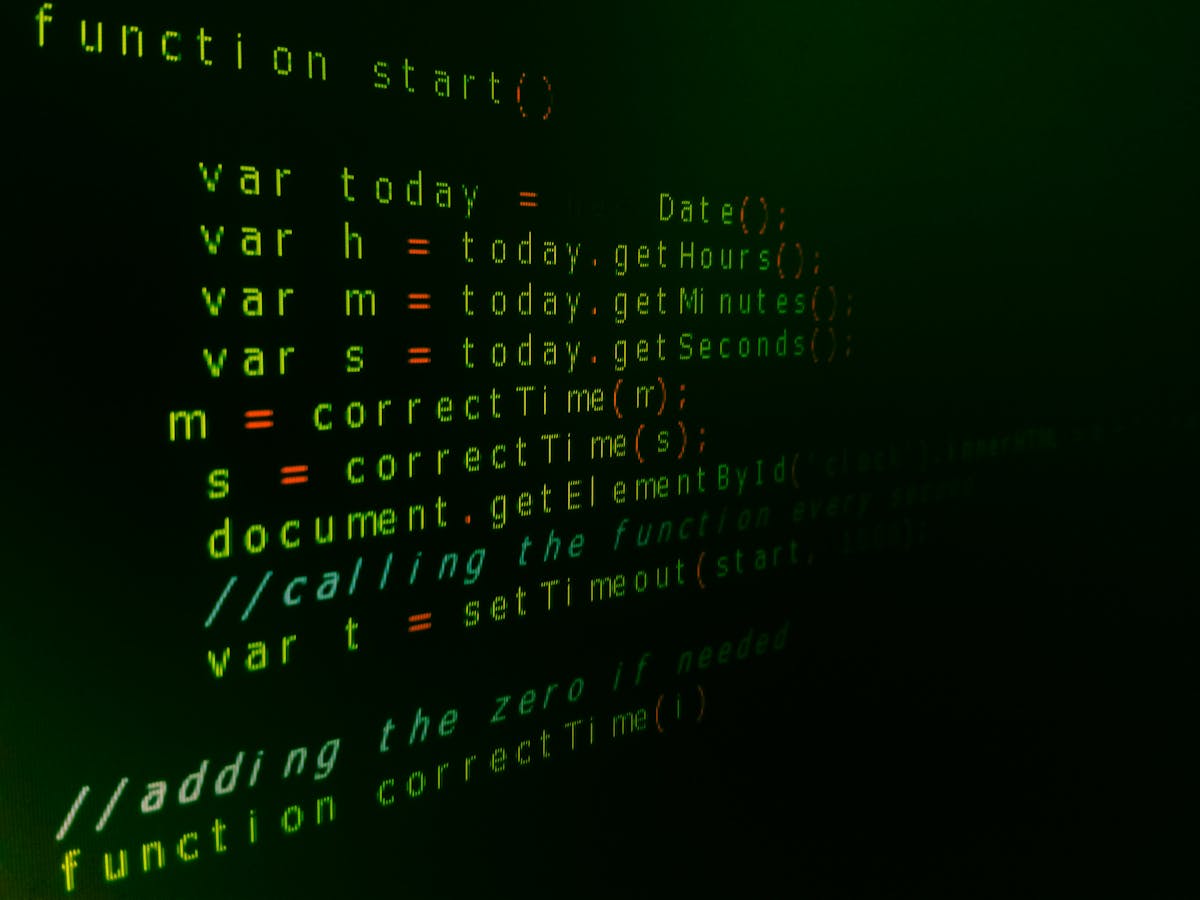Everything About Full-Stack Development: Discovering Its Function in Effective Software Program Engineering
Full-stack growth has emerged as a cornerstone of modern-day software application engineering. By incorporating front-end and back-end innovations, it develops cohesive internet applications. This approach not only improves customer interfaces but likewise reinforces server-side performance. As the demand for adaptable programmers boosts, understanding the subtleties of full-stack development comes to be necessary. Just what does this include, and what effects does it hold for the future of software application engineering?
Recognizing Full-Stack Development
Full-stack development includes the total spectrum of internet growth, incorporating both front-end and back-end technologies. This multidisciplinary method enables developers to produce totally useful web applications, handling everything from interface layout to server administration. Full-stack programmers have a wide-ranging ability set, allowing them to navigate numerous layers of an application, consisting of databases, server-side logic, and client-side interactions.Understanding the full-stack growth process involves acknowledging the value of customer experience and application efficiency. Programmers need to take into consideration just how these components engage, ensuring a seamless experience for users. In addition, full-stack growth promotes collaboration among teams, as developers can communicate efficiently across disciplines. aether group dubai. This versatility not just simplifies operations however likewise enhances analytical abilities. In a progressively digital globe, the need for full-stack developers continues to grow, highlighting their critical duty in the software program design landscape
Trick Technologies in Full-Stack Advancement
The landscape of full-stack development is specified by a range of essential innovations that equip developers to construct durable internet applications. On the front end, prominent frameworks like React, Angular, and Vue.js promote the development of dynamic user interfaces. These devices enable developers to produce receptive layouts and enhance customer experiences.On the back end, Node.js, Django, and Ruby on Bed rails are widely made use of for server-side advancement, allowing efficient handling of data source interactions and server reasoning. Data sources such as MongoDB and PostgreSQL are important for information storage and retrieval.APIs are crucial in connecting the front end and back end, permitting smooth data exchange. In addition, version control systems like Git are indispensable for handling code modifications and partnership among advancement groups. Jointly, these innovations form an extensive toolkit that allows full-stack designers to supply high-quality applications effectively.
Benefits of Being a Full-Stack Programmer
A career as a full-stack developer supplies countless benefits that interest both amateurs and skilled specialists. One substantial advantage is the versatility to deal with both front-end and back-end modern technologies, allowing developers to create all-inclusive remedies. This twin ability collection enhances analytical capacities, enabling them to attend to concerns throughout the whole pile efficiently.Additionally, full-stack developers frequently appreciate greater job opportunities, as their diverse skills make them important assets to business seeking to improve growth processes. The capability to comprehend and handle entire jobs promotes enhanced partnership within teams, leading to an extra natural workflow.Moreover, full-stack programmers have a tendency to command higher incomes as a result of their considerable proficiency. Continual understanding is another perk, as they frequently engage with different technologies and structures, maintaining their abilities appropriate. Ultimately, the duty of a full-stack designer is fulfilling and vibrant, providing a meeting occupation path for those that accept it.
The Full-Stack Development Refine
While maneuvering with the full-stack development procedure, designers take part in a collection of structured stages that ensure the creation of durable applications. Initially, demands event is vital, as it lays the structure for understanding customer demands and job objectives. This is adhered to by creating the application style, where the general structure, innovations, and structures are selected to accomplish the requirements.Next, designers change to the front-end and back-end growth phases, where they develop customer interfaces and server-side logic, specifically. Evaluating is an indispensable stage that confirms security, performance, and performance, dealing with prospective pests and issues prior to deployment.Finally, the implementation stage entails launching the application and checking its performance in a real-time setting. Throughout this model, procedure and comments loops are crucial, permitting continuous enhancement and adjustment to altering demands. This structured strategy helps with the development of effective, scalable, and maintainable applications.

Collaboration In Between Front-End and Back-End Teams
Effective cooperation between front-end and back-end groups is vital for successful full-stack advancement. Solid interaction, the use of common tools and innovations, and active cooperation techniques can greatly boost workflow and project outcomes - niels denekamp linkmedia. By cultivating a natural working connection, groups can better align their efforts and deliver a smooth customer experience
Value of Interaction
Successful collaboration between front-end and back-end teams this article pivots on clear and constant communication. This communication is crucial for straightening job goals, timelines, and expectations. When front-end designers recognize the back-end design and the other way around, they can produce more functional and natural applications. Regular meetings and updates facilitate the exchange of concepts, enabling groups to attend to prospective issues early in the growth process. Additionally, reliable interaction promotes a collective environment, motivating employee to share understandings and feedback, inevitably bring about innovative remedies. By prioritizing interaction, teams can lessen misconceptions, enhance operations, and enhance total efficiency. Subsequently, the duty of communication in full-stack development can not be overstated; it offers as the foundation of successful software program engineering tasks.
Shared Devices and Technologies
Clear interaction sets the stage for making use of common devices and technologies successfully in full-stack development. Extra resources This collaboration in between front-end and back-end teams depends upon the adoption of integrated tools that simplify workflows and improve performance. Variation control systems, such as Git, help with seamless cooperation by permitting developers to track modifications and combine code successfully. Furthermore, APIs offer as an essential bridge, enabling front-end and back-end elements to interact properly. Additionally, shared advancement settings, like Docker, foster uniformity, permitting groups to operate in a consistent arrangement. By leveraging these shared devices, groups can decrease misconceptions and speed up the advancement process, ultimately resulting in more cohesive software application solutions that satisfy project needs and customer expectations.
Agile Collaboration Practices

Usual Difficulties in Full-Stack Development
What barriers do full-stack designers experience as they navigate the intricacies of both front-end and back-end technologies? One noticeable difficulty is the quick evolution of tools and structures, which calls for continuous knowing and adaptation. Designers should stay upgraded with both front-end libraries, such as React or Angular, and back-end modern technologies like Node.js or Django, which can result in ability spaces or knowledge overload.Additionally, full-stack designers frequently fight with workload monitoring due to the substantial variety of obligations. Stabilizing tasks in between user interface layout, server-side logic, and data source monitoring can result in time restrictions and task delays.Collaboration and interaction within teams also present obstacles, as full-stack programmers should link the space in between front-end and back-end groups, ensuring positioning on job objectives. Debugging throughout multiple layers of the stack can complicate issue resolution, consuming useful time and sources.
The Future of Full-Stack Growth
Innovation in innovation guarantees to form the future of full-stack development considerably. As business progressively embrace cloud computing and microservices designs, the need for full-stack developers that can seamlessly integrate front-end and back-end technologies is expected to expand. The surge of fabricated knowledge and equipment learning will likely affect advancement methods, allowing more efficient coding and automated testing processes.Moreover, the development of low-code and no-code platforms might redefine the duty of full-stack designers, allowing them to concentrate on higher-level layout and style while streamlining routine jobs (niels denekamp linkmedia). This change might foster collaboration in between technical and non-technical employee, expanding the scope of full-stack development.Additionally, the focus on cybersecurity will cause the integration of safety and security practices within the full-stack growth lifecycle. Generally, the future of full-stack advancement appears bright, identified by continual knowing and adaptation to an ever-changing technical landscape
Often Asked Inquiries
What Educational History Is Preferred for Full-Stack Developers?
The preferred academic background for full-stack programmers typically consists of degrees in computer system science or software application design. Several successful programmers likewise arise from coding bootcamps or self-taught experiences, stressing useful abilities over official education.
Exactly How Do Full-Stack Programmers Stay Updated With New Technologies?
Full-stack designers remain updated with new modern technologies through constant understanding via on the internet programs, attending workshops and meetings, participating in community forums, complying with market blog sites, and explore new tools and frameworks in personal jobs.
Is Full-Stack Growth Suitable for Beginners?
Full-stack development can be suitable for beginners, as it provides a considerable understanding of both front-end and back-end modern technologies. Nonetheless, the learning curve may be steep, requiring dedication and consistent practice to master different skills.
What Are Usual Job Paths for Full-Stack Developers?
Typical occupation paths for full-stack developers include duties such as software program designer, internet designer, technical lead, and project supervisor. Several likewise focus on certain innovations or shift right into relevant fields like product monitoring or individual experience style.
Just How Does Full-Stack Advancement Differ From Traditional Software Advancement?
Full-stack growth includes both front-end and back-end jobs, permitting designers to manage entire jobs. On the other hand, conventional software program advancement commonly includes specialized functions, concentrating separately on either client-side or server-side elements of applications. Full-stack growth encompasses the full spectrum of web growth, incorporating both front-end and back-end technologies. Full-stack designers possess a wide-ranging ability set, allowing them to navigate numerous layers of an application, consisting of databases, server-side logic, and client-side interactions.Understanding the full-stack growth process includes identifying the value of user experience and application efficiency. Furthermore, full-stack growth cultivates cooperation among teams, as designers can interact successfully across disciplines. The landscape of full-stack development is defined by a selection of vital innovations that empower developers to construct robust web applications. While steering with the full-stack growth process, developers engage in a collection of structured stages that assure the creation of robust applications.